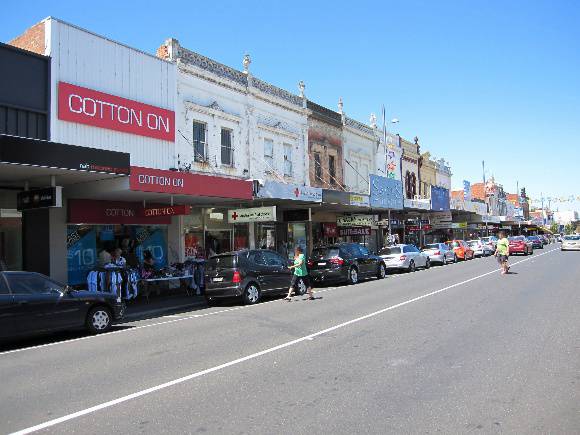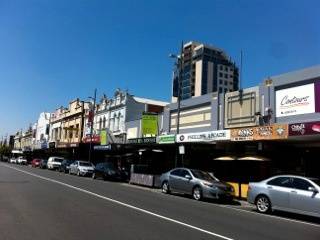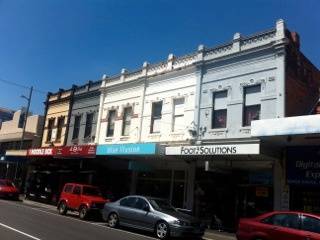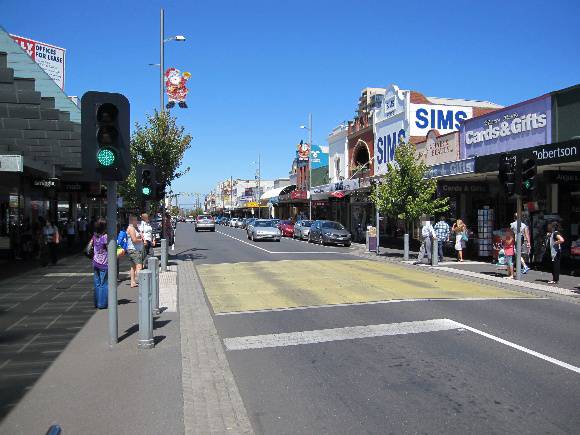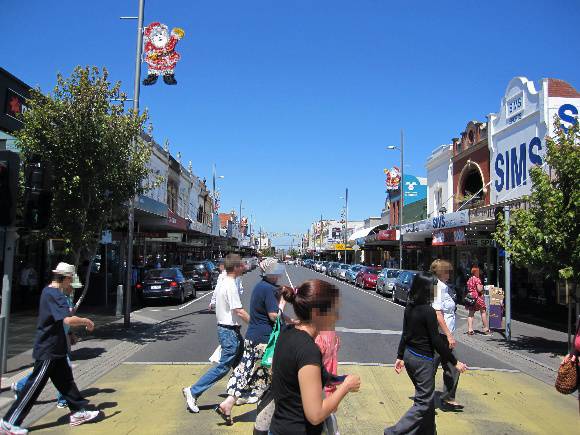| Back to search results » | Back to search page » |
|
Puckle Street
Location001-141 & 2-146 PUCKLE STREET, 2-12 MARGARET STREET, 633-639A MOUNT ALEXANDER ROAD, 28A-32 SHUTER STREET, and 28 & 35 PRATT STREET, MOONEE PONDS, MOONEE VALLEY CITY LevelIncluded in Heritage Overlay |
|
Statement of Significance
What is significant? - The intactness to the key periods of development. The following buildings contribute to the significance of the precinct: - 1-47, 53-73, 85-95, 101-107, 121-125 & 129-141 (odds) and 2-12,
16-32, 38-46, 50-64, 70-104, 108-120, 128 & 132-146 (evens) Puckle
Street Non original alterations and additions to contributory buildings and
the buildings at 14, 48, 49-51, 66-68, 75, 97-99, 106, 109-119,
122-126, 127 & 130 Puckle Street, 28 Pratt Street and 28A Shuter
Street are not significant.
How is it significant?
Why is it significant? Aesthetically, it is significant as a fine collection of single and
double-storey shops characterised by masonry construction embellished
with rendered ornamentation. The form, finish and general ornament
allows each period to express its differences from within the basic
form and thus illustrates a series of milestones in commercial
development of Puckle Street through the Victorian, Edwardian and
Inter-War periods. (Criteria D & E)
The Puckle Street precinct in Moonee Ponds is a commercial area
comprising buildings that predominantly date from c.1885 to c.1940.
The following buildings and elements contribute to the significance of
the precinct:
- The
integrity of the contributory buildings above ground floor level.
-
The consistency of scale and siting of buildings.
- The remnant
nineteenth century residential buildings, now surrounded by later additions.
- 2-12 Margaret Street
- 633-639A Mt Alexander Road, and
- 30-32 Shuter Street.
The Puckle Street precinct of local historic and aesthetic
significance to the City of Moonee Valley.
Historically, Puckle Street is significant as the main commercial
centre of Essendon since the 1880s. Retail centres such as these,
which initially developed around railway stations and along tramlines,
were an important regional focus from the late nineteenth century
until the emergence of car-oriented shopping centres in the late
1950s. The importance of Puckle Street is illustrated by the diversity
of commercial premises, which range from single shops to larger
emporios and also by the number of banks. The remnant residential
building illustrates the earlier incarnation as a residential area and
its transition to a commercial centre by the early twentieth century.
(Criteria A & D)
Group
Commercial
Category
Commercial Precinct


